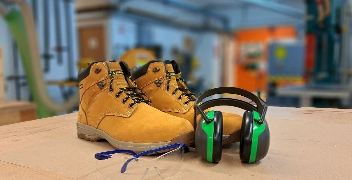Dust Monitoring Survey
Workplace Audit
| Service | |
|---|---|
| On-site Data Collection | ✔ |
| Data Summary | ✔ |
| Recommendations for action | ✔ |
| Duration | |
|---|---|
| Data Collection (Site Visit) | Typically, 1 Day |
| Analysis and report | To follow |
| Compliance | |
|---|---|
| Control of Substances Hazardous to Health (COSHH) Regulations 2002 | ✔ |
| The Health and Safety at Work Act 1974 | ✔ |
Dust Monitoring Survey
Workplace Audit
Real-Time Woodworking Workshop Dust Readings
A walk-through dust detection survey will provide instant indicative results, which will quickly identify any problem areas for secondary investigation or action.
You will have data that tells you how you are performing against the current Workplace Exposure Limit (WEL) and help identify where improvements might need to be made.
The service will consist of onsite data collection using a Casella Micro Dust Pro real-time dust monitor, data summary, and recommendations for action.
Specification
| Delivery |
|---|
This service uses a Casella Microdust Pro real-time dust monitor to provide clients with an indicative understanding of where and when dust is being generated in woodworking workshops or wood machining areas. It can assist clients in checking the effectiveness of control measures and help identify within individual tasks or processes where higher peaks of dust emissions may require secondary investigation or action.
This service is a beneficial addition to the workplace management toolbox, aiding in understanding where additional improvements may be gained. However, it should not be viewed as a substitute for personal workplace dust exposure monitoring, which will provide a more accurate recording of an employee’s daily exposure against the current workplace exposure limits for wood dust
You may also like…

Stephen Binfield

Polli Morrow
We hired Ray Fearon from DIDAC woodworking academy to come to our Men’s Shed to teach us safety in our workshop. He was an excellent instructor. Thorough, knowledgeable, approachable and a person one could approach to ask any question. We learnt a lot from him and going forward we are passing that information to our members.


